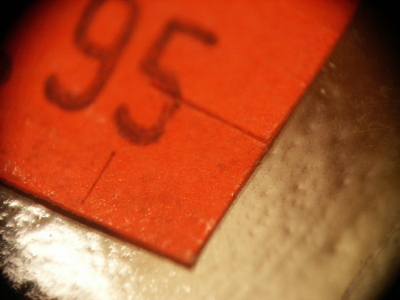Price Tag Psychology

Retail price tags are disappearing, as documented by MSNBC’s Bob Sullivan in Whatever Happened to Price Tags?. Stores are abandoning the traditional stamps and stickers affixed to the items and using shelf labels instead. Checkout scanners mean cashiers no longer need to refer to the item’s tag, and the cost of individual tagging has been estimated at $.25 per item – no small expense considering the number of items in a typical shopping cart. While technology and productivity are the big driving forces, we think there’s an underlying neuromarketing reason, too. Yesterday’s post, The Pain of Buying, covered research by Carnegie Mellon neuroscientist George Loewenstein and others showing that high pricing caused higher activation levels in a brain area associated with pain. High priced items which lit up the insula were less likely to be bought by the subjects in Loewenstein’s experiment.
In an interview with Loewenstein, he pointed out that techniques that disguise the price of an item, like “luxury packages” of automotive options that never identify how much you are paying for specific items like leather seats or the better stereo, effectively reduce the negative activation and increase the probability of purchase.
It seems likely to us that the more detached the price is from the item on the shelf, the less likely that the consumer’s insula will be lit up and that he will leave the item on the shelf. Assuming that the store has relatively high prices on non-sale items (a common retail practice), minimizing the chance that the consumer will pay attention to the price makes good business sense, even if it doesn’t demonstrate good citizenship. The consumer will, of course, see the product and its packaging, which will produce the positive association with the product and light up the consumer’s nucleus accumbens. (“We’re out of cereal… Frosted Flakes… yum! “). The one thing that could kill the deal at that point is a negative reaction to the price. (“$4 for a small box! What a rip-off! I know I saw them for less at another store.”) That price reaction would tend to activate the consumer’s insula, and might well prevent the purchase. The more distant the price is from the item, the lower the probability that a busy shopper will check it at all. There’s no experimental evidence for this, but one also wonders if the spatial separation of the price might reduce its psychological impact even if the consumer did take the time to find the shelf label.
Stores also take advantage of the neuroscience of shopping when they post giant sale prices on or near attractively-priced items. These sale prices won’t activate the consumer’s insula, but rather the medial prefrontal cortex – the area responsible for balancing gains and losses. For these items, emphasizing the price will increase the probability of purchase – the shopper will experience both the positive activation from the product itself, and the more rational part of the brain will confirm that the price is a good deal.
Our first post on Loewenstein’s work, Brain Scans Predict Buying Behavior, has more information on this topic.

Roger,
Just curious, but where do you get your cost figure of $0.25/tag?
Thanks,
Donald
Donald, the linked story – http://redtape.msnbc.com/2007/02/eightynine_year.html#posts – cites a study done by academics from Minnesota and Cornell. Thanks for stopping by!
Roger